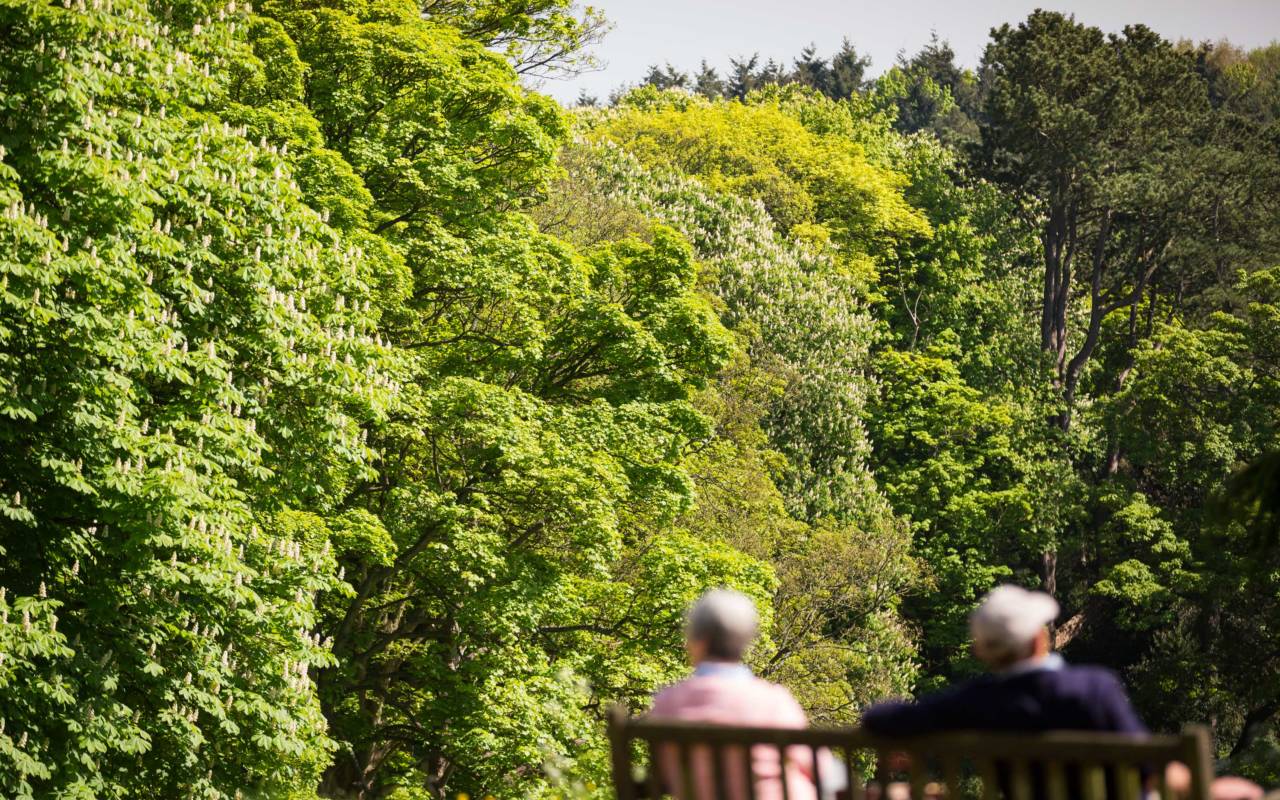
Harmony in the gardens
Originally designed as a ‘pleasure ground’ for guests staying at the Manor, the gardens are still enjoyed by visitors for their beauty and calm.
The gardens at Waddesdon are the vision of Baron Ferdinand de Rothschild, who created the Manor at the end of the 19th century. What began as a bare hill in 1874 was transformed into an exceptional example of Victorian horticulture including formal gardens, trees and walks, an Aviary full of exotic birds, and an impressive collection of 18th-century sculpture.

The creation of the garden was an enormous undertaking, beginning with the levelling of the hill top, overseen by Ferdinand himself, with the help of the French landscape architect, Elie Lainé. Ferdinand had inherited his love of gardens from his mother, Charlotte, and described how when he was a child, he and his siblings were all given a little plot of their own to plant as they wished.
Ferdinand was a contradictory personality, on one hand a generous and indulgent host, on the other, a shy and sometimes withdrawn person. He lost his beloved wife, Evelina, after only a year of marriage in 1866 and once wrote to a friend “I am a lonely, suffering… individual, despite the gilded and marble rooms in which I live”. He was a perfectionist, with an eye for detail and a deep knowledge of history, all reflected in the architecture of the house, its contents and its setting. Just as inside, the gardens offered an unfolding sequence of vistas, points of interest and changes of mood.

David Lindsay, the Earl of Crawford, stayed at Waddesdon in June 1898 and wrote in his diary that ‘it is in the gardens and shrubberies that he [Baron Ferdinand] is happy. He is responsible for the design of the flower beds; for the arrangement of colour, for the transplanting of trees; all these things are under his personal control and I was astonished at the knowledge he displayed: I don’t mean about botanical lore but about the history of the place. Every tree and shrub has been placed and planted by him for the place was bare upland when he bought it twenty years ago. Point to an oak or a maple and he will tell you precisely when it was planted, whence it was transplanted or wither it shall be moved in the autumn.’ He added ‘it is only when among his shrubs and orchids that the nervous hands of Baron Ferdinand are at rest’.
In the 2016 podcast series ‘The Ideas That Make Us’, historian Bettany Hughes explored the concept of harmony, and where it might be found. Gardens have long been places for calm reflection, and the orderly, geometric arrangement of the Parterre and Aviary garden at Waddesdon evoke the Islamic concept of the garden as ‘an earthly paradise’, somewhere to pause and enjoy.

The gardens remain an idyllic place to wander, somewhere to alleviate the stresses and pace of modern life. With quiet spaces such as the Rose Garden, Baron’s Walk or Tulip Patch, visitors can find rest and respite at Waddesdon, just as Ferdinand did.






